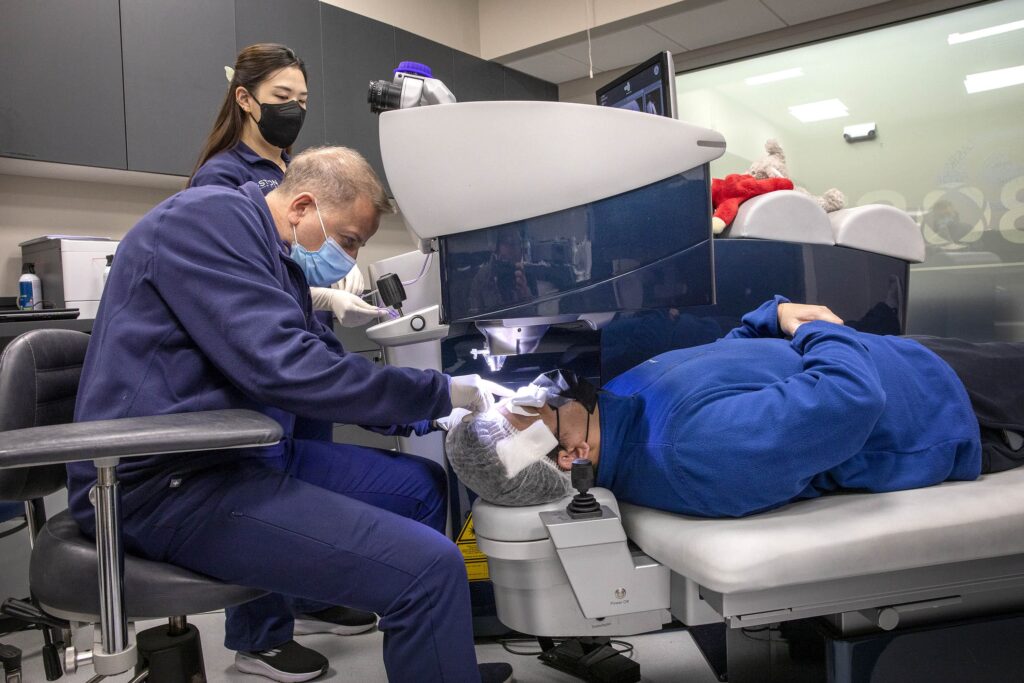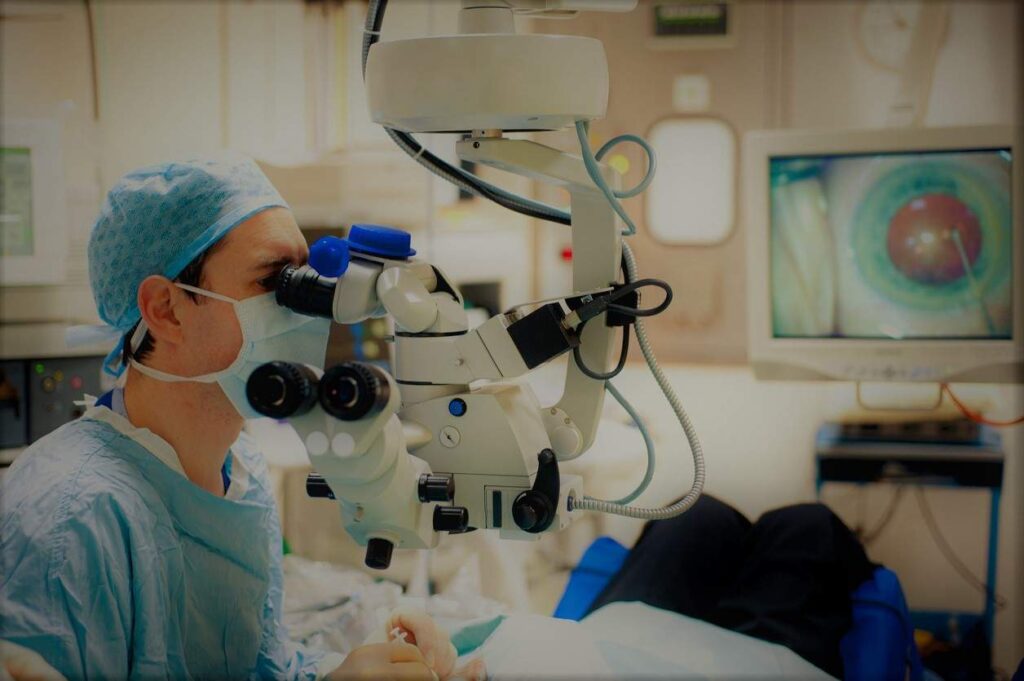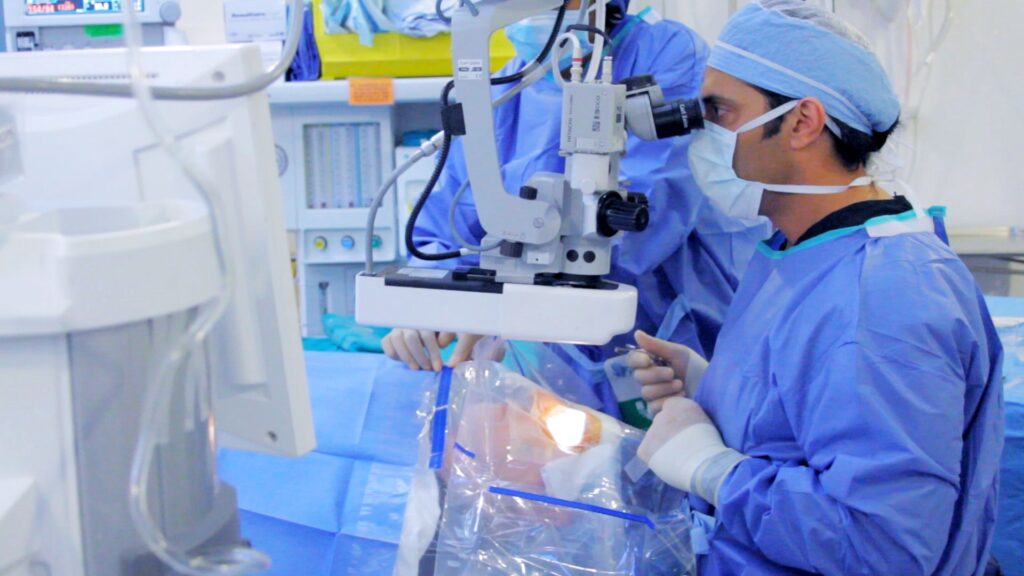Cataracts are a common eye condition that affects millions of people worldwide. This article will explore the importance of expert cataract surgery techniques in transforming lives and restoring vision. By understanding the causes and symptoms of cataracts, recognizing early signs, and exploring the evolution of surgical techniques, we can appreciate the significant role of expertise in successful outcomes. We will also delve into the impact of cataract surgery on postoperative life and discuss the exciting future prospects and innovations in this field.
Understanding Cataracts: Causes and Symptoms
Cataracts develop when the clear lens of the eye becomes cloudy, resulting in blurred vision and reduced clarity. Although aging is the primary cause of cataracts and require cataracts surgery, other factors such as genetics, sun exposure, and certain medical conditions can contribute to their development. Common symptoms include cloudy or blurred vision, increased sensitivity to light, difficulty seeing at night, and a yellowing of colors.
The Impact of Cataracts on Vision
The presence of cataracts has a profound impact on vision. As the lens becomes cloudier, it obstructs the passage of light, hampering the eye’s ability to focus accurately. This leads to blurred vision and gradual vision loss, affecting daily activities such as reading, driving, and recognizing faces. Cataracts can significantly decrease quality of life and independence.
Recognizing the Early Signs of Cataracts
Early detection of cataracts is crucial for effective treatment. It is important to be aware of warning signs such as frequent changes in eyeglass prescriptions, difficulty reading small print, seeing halos around lights, and experiencing double vision. Regular eye examinations can aid in the early detection and monitoring of cataracts, enabling timely intervention and better visual outcomes.

Furthermore, it is worth noting that cataracts can affect individuals of all ages, although they are more commonly found in older adults. The aging process causes the proteins in the lens to break down and clump together, resulting in the clouding of the lens. However, cataracts can also be caused by other factors, such as trauma to the eye, certain medications, and even smoking.
In addition to the physical impact on vision, cataracts can also have emotional and psychological effects. The gradual loss of visual acuity can lead to feelings of frustration, anxiety, and even depression. Tasks that were once simple and enjoyable, such as reading a book or watching a movie, can become challenging and disheartening. Therefore, it is essential to address cataracts promptly to improve not only the physical but also the emotional well-being of individuals affected by this condition.
The Evolution of Cataract Surgery Techniques
Cataract surgery has come a long way since its inception. Initially, surgery involved manually removing the clouded lens and replacing it with an artificial intraocular lens implant. While this method was effective, it had limitations, such as large incisions and catered to a one-size-fits-all approach.
Traditional Cataract Surgery Methods
Traditional cataract surgery techniques involved creating a large incision to extract the clouded lens manually. The surgeon would then insert an intraocular lens through the incision to restore vision. Although this method provided improved vision for patients, it required a lengthy recovery period and carried risks such as infection and astigmatism.
Modern Advances in Cataract Surgery
Advancements in technology and surgical techniques have revolutionized cataract surgery. The introduction of phacoemulsification, a process that uses ultrasonic energy to break up the clouded lens, has made surgery less invasive and improved visual outcomes. Additionally, the use of smaller incisions and foldable intraocular lenses has allowed for rapid healing, decreased risk of complications, and increased customization according to individual patient needs.
One of the most significant advancements in cataract surgery is the use of femtosecond lasers. These lasers have revolutionized the precision and accuracy of the procedure. They allow surgeons to create precise incisions, perform lens fragmentation, and correct astigmatism with unparalleled accuracy. The use of femtosecond lasers has not only improved surgical outcomes but also reduced the risk of complications, such as corneal damage and inflammation.
Another exciting development in cataract surgery is the use of intraoperative aberrometry. This technology allows surgeons to measure the eye’s refractive power during the surgery itself, ensuring the most accurate placement of the intraocular lens. Intraoperative aberrometry helps to minimize postoperative refractive errors, providing patients with better visual outcomes and reducing the need for additional corrective procedures.
The Role of Expertise in Successful Cataract Surgery
While technological advancements have greatly improved cataract surgery outcomes, the expertise of the surgeon remains paramount for achieving successful results. An experienced cataract surgeon possesses the necessary skills and knowledge to handle complex cases, customize surgical plans, and address any potential complications. Their expertise ensures optimal visual outcomes and patient satisfaction.
The Importance of Surgeon Skill and Experience
Surgeons who have honed their skills through years of practice can navigate through various challenges encountered during cataract surgery. These skilled practitioners can handle intricate cases, such as those with advanced cataracts, astigmatism, or other eye conditions, with confidence and precision. Their expertise ensures the safest and most effective surgical techniques are employed for each patient.
The Value of Specialized Cataract Surgery Training
Specialized training in cataract surgery equips surgeons with the knowledge and skills required to deliver exceptional patient care. Surgeons who undergo specialized training programs gain insights into the latest advancements, enhance their surgical techniques, and stay updated with the evolving field. This training fosters a commitment to excellence and patient-centered care, leading to better surgical outcomes and improved patient satisfaction.
Furthermore, specialized training programs often provide surgeons with opportunities to collaborate with other experts in the field. This collaboration allows for the exchange of ideas, techniques, and best practices, further enhancing the surgeon’s expertise. By learning from the experiences of their peers, cataract surgeons can continually refine their skills and stay at the forefront of advancements in the field.
In addition to technical expertise, experienced cataract surgeons also bring a deep understanding of the unique needs and concerns of their patients. They take the time to listen to their patients’ goals and expectations, ensuring that the surgical plan is tailored to meet their individual needs. This personalized approach not only enhances the surgical outcome but also fosters a strong doctor-patient relationship built on trust and open communication.
Ultimately, the role of expertise in successful cataract surgery cannot be overstated. It is the combination of technical skill, experience, specialized training, and patient-centered care that sets skilled cataract surgeons apart. By entrusting their vision to an experienced and knowledgeable surgeon, patients can have confidence in the outcome of their cataract surgery and look forward to a brighter, clearer future.
Life After Cataract Surgery: Expectations and Reality
What can one expect after cataract surgery? The immediate and long-term effects of surgery play a significant role in the overall patient experience and satisfaction.
Immediate and Long-Term Effects of Surgery
Following cataract surgery, patients often experience immediate improvements in vision. However, it is normal to observe some initial blurring or discomfort as the eyes adjust to the intraocular lens. With proper postoperative care, any temporary side effects subside within a few weeks. Long-term effects include enhanced visual acuity, improved color perception, and a reduced dependence on glasses for daily activities.
The Transformation of Vision Post-Surgery
The transformation of vision post-cataract surgery is remarkable. Patients report a remarkable improvement in clarity and brightness, enabling them to enjoy activities they may have previously struggled with. Whether it’s reading a book, driving at night, or simply appreciating the beauty of the world around them, the restoration of vision through expert cataract surgery techniques can truly transform lives.
Imagine being able to see the vibrant colors of a sunset in all their glory, with every shade and hue vividly displayed. Picture yourself effortlessly reading the fine print on a medication bottle, without squinting or straining your eyes. These are just a few examples of the incredible changes that can occur after cataract surgery.
Not only does cataract surgery improve visual acuity, but it also enhances the overall quality of life for patients. Imagine the joy of being able to recognize the faces of loved ones with clarity and precision, or the freedom of being able to engage in outdoor activities without the constant need for glasses. Cataract surgery truly opens up a world of possibilities.
Furthermore, the advancements in cataract surgery techniques have made the procedure safer and more effective than ever before. Surgeons now have access to state-of-the-art technology, such as laser-assisted cataract surgery, which allows for greater precision and customization. This means that each patient’s surgery can be tailored to their specific needs, ensuring optimal results.
So, if you’re considering cataract surgery, rest assured that the immediate and long-term effects are nothing short of remarkable. From improved vision and enhanced color perception to a reduced dependence on glasses, the benefits are truly life-changing. Don’t let cataracts hold you back from experiencing the world in all its beauty. Take the first step towards a clearer future by exploring the possibilities of cataract surgery today.

Future Prospects: Innovations in Cataract Surgery
The field of cataract surgery is constantly evolving, with researchers and surgeons striving to improve surgical techniques and patient outcomes.
Emerging Techniques in Cataract Surgery
Cataract surgery techniques continue to advance, aiming for enhanced precision and better visual outcomes. Emerging techniques such as laser-assisted cataract surgery and femtosecond laser technology offer improved accuracy, efficiency, and safety. These techniques allow for precise incisions, customized lens placement, and reduced dependence on manual manipulation, leading to enhanced surgical outcomes.
The Potential of Technology in Enhancing Cataract Surgery Outcomes
Technological advancements have the potential to revolutionize cataract surgery even further. Cutting-edge innovations, such as robotic-assisted surgery, artificial intelligence-guided procedures, and enhanced imaging systems, aim to further improve surgical precision, patient safety, and overall outcomes. These exciting advancements hold promise for the future of cataract surgery, opening up new possibilities for transforming lives.
One particularly fascinating area of development is the use of artificial intelligence (AI) in cataract surgery. AI algorithms can analyze preoperative data, such as patient demographics, ocular measurements, and medical history, to predict the optimal surgical approach for each individual. This personalized approach maximizes the chances of a successful outcome and minimizes the risk of complications. Additionally, AI can assist surgeons during the procedure by providing real-time feedback and guidance, ensuring that every step is executed with utmost precision.
Another promising advancement is the integration of virtual reality (VR) technology into cataract surgery. VR allows surgeons to immerse themselves in a virtual operating environment, providing a detailed and realistic view of the patient’s eye. This immersive experience enhances spatial awareness and depth perception, enabling surgeons to perform delicate maneuvers with greater accuracy. Furthermore, VR can be used as a training tool, allowing aspiring cataract surgeons to practice surgical techniques in a safe and controlled virtual environment before operating on real patients.
In conclusion, expert cataract surgery techniques have the power to transform lives and restore vision to those affected by cataracts. Understanding the causes and symptoms of cataracts, recognizing early signs, and embracing the evolving landscape of surgical techniques lay the foundation for successful outcomes. The skill and experience of cataract surgeons, coupled with advancements in technology, ensure optimal visual outcomes and improved patient satisfaction. Life after cataract surgery brings a world of possibilities, and the future holds even greater prospects for enhancing surgical outcomes. Expert cataract surgery truly offers a new vision, transforming lives and opening up a brighter future for those affected by this common eye condition.
Other Resources: Unleashing the Potential of LASIK Eye Surgery at Our Vision Center

